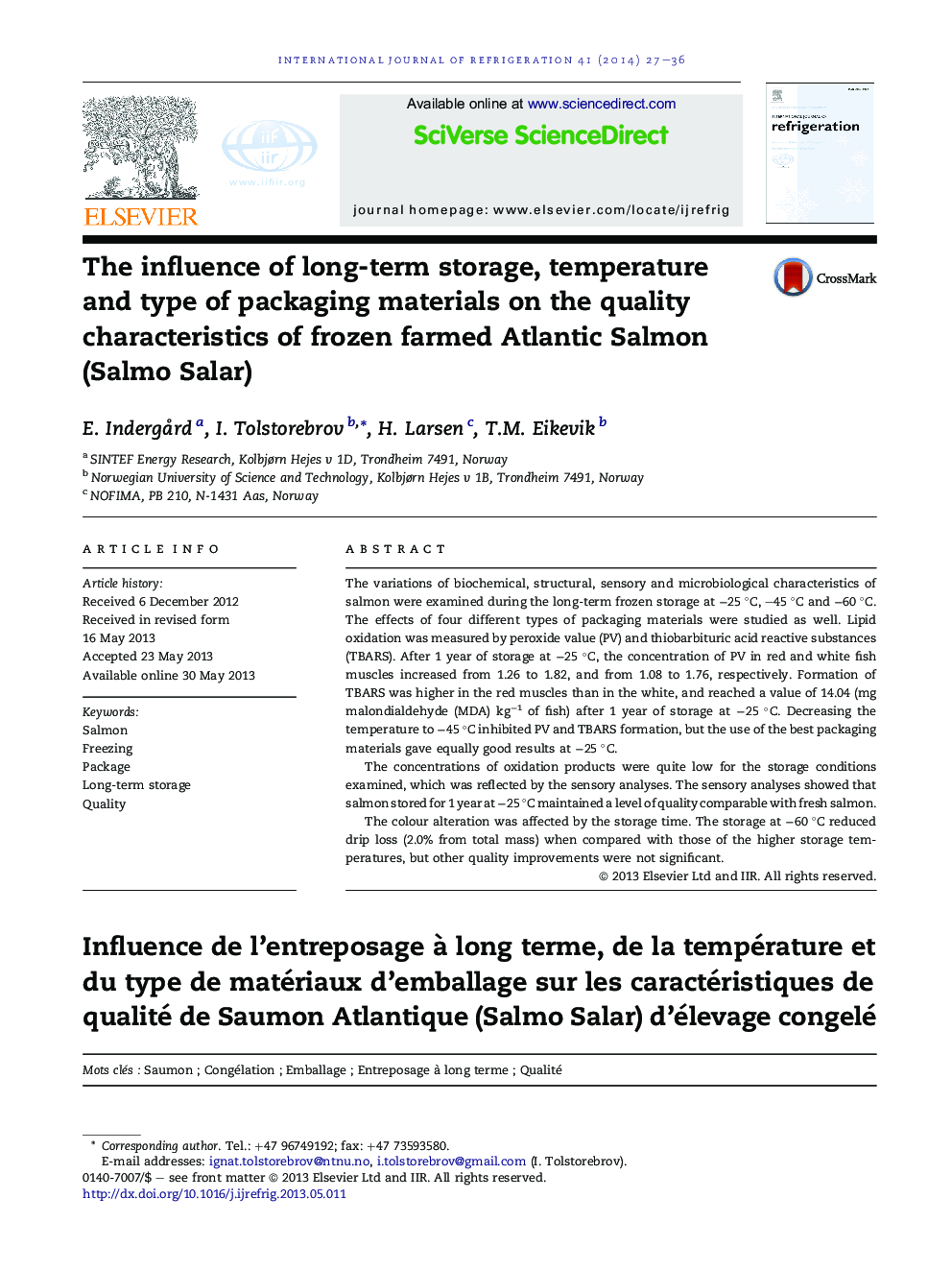| Article ID | Journal | Published Year | Pages | File Type |
|---|---|---|---|---|
| 789386 | International Journal of Refrigeration | 2014 | 10 Pages |
•Alteration in the quality of fish was studied for 3 different temperatures.•The influence of packaging materials on fish quality was also analysed.•The current study helps to find the optimal storage conditions for Salmon.
The variations of biochemical, structural, sensory and microbiological characteristics of salmon were examined during the long-term frozen storage at −25 °C, –45 °C and −60 °C. The effects of four different types of packaging materials were studied as well. Lipid oxidation was measured by peroxide value (PV) and thiobarbituric acid reactive substances (TBARS). After 1 year of storage at −25 °C, the concentration of PV in red and white fish muscles increased from 1.26 to 1.82, and from 1.08 to 1.76, respectively. Formation of TBARS was higher in the red muscles than in the white, and reached a value of 14.04 (mg malondialdehyde (MDA) kg−1 of fish) after 1 year of storage at −25 °C. Decreasing the temperature to −45 °C inhibited PV and TBARS formation, but the use of the best packaging materials gave equally good results at −25 °C.The concentrations of oxidation products were quite low for the storage conditions examined, which was reflected by the sensory analyses. The sensory analyses showed that salmon stored for 1 year at −25 °C maintained a level of quality comparable with fresh salmon.The colour alteration was affected by the storage time. The storage at −60 °C reduced drip loss (2.0% from total mass) when compared with those of the higher storage temperatures, but other quality improvements were not significant.
